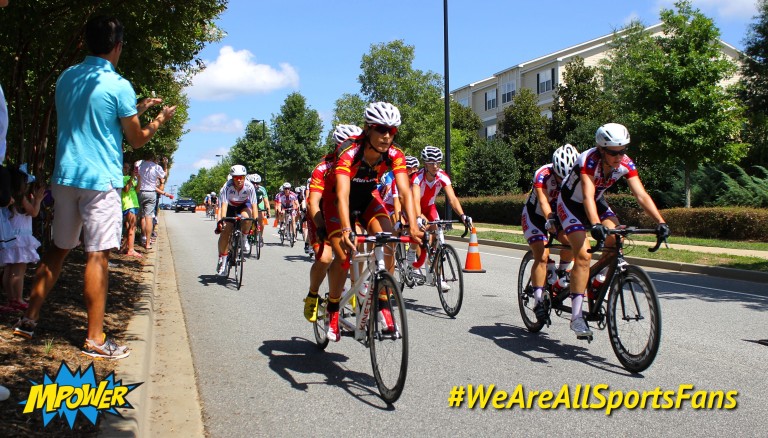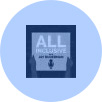
The Essential Fuel for the Paralympics
In all the hype surrounding two of the largest international sporting events in the world—the Olympics and the Paralympics—we’ve heard about grueling training routines, deep backstories, scandals, sagas, but no attention is paid to the one factor that makes these events even possible: fans. Let’s face it, sports themselves can exist happily without fans. As anyone who plays a recreational league sport can tell you, when only a dozen people show up to cheer you on—or even zero people—the game still goes on and you play your heart out and all is well. But if only a few tens of thousands of people were to show up at the Paralympics, the event would crumble, as we’ve seen three weeks ago when ticket sales were direly low. Large-scale sporting events fundamentally rely on fans. This is just another unifying factor between the Olympics and Paralympics.

Eli Wolff, through his #WeAreAllSportsFans campaign, believes increasing the engagement and public display of adaptive sports fans will increase the exposure and media coverage of adaptive sports as a whole. (photo credit: Mpower Sports)
Put this way, it may seem obvious, but what is often less obvious are the implications of this unifying factor. The Paralympics opening ceremony is tonight. Millions of people around the world will tune in and watch the spectacle. NBC has allotted an unprecedented 66 hours of coverage to the Paralympic Games, an increase of 5.5 hours from the last Games, which is great. But when you consider that these 66 hours cover over 4000 athletes and over 528 medal events they may seem a little sparse. And if you further consider that the 11,000 Olympic athletes were covered with 6755 hours you may realize there is something seriously wrong with this picture. To give you a better idea, the Olympics received 365 hours of coverage a day, while the Paralympics will receive 66 hours total for all of its duration from September 7-18. Why this jaw-dropping disparity? Well, it comes back to the numbers of fans, or rather, the perception of the numbers.
“We’ve been asking the question of ‘what are the main things that have been missing from media coverage of adaptive sports,’” says Eli Wolff, Director of the Sport and Development program at Brown University and Co-Founder, MPower Sports Media. “The big missing part of the conversation is ‘who are the fans.’ There is some anecdotal evidence that friends and family are fans. But anyone can be fan.” And that in short sums up the impetus behind MPower Sports Media’s new campaign #WeAreAllSportsFans. The campaign seeks to engage adaptive sports fans and help them to show the world what it means to be a fan.
At the end of the day, the stark disparity we see in the Olympic versus Paralympic media coverage is somewhat of a chicken and egg problem. If the mainstream media isn’t covering adaptive sports, then potential would-be fans simply don’t know that the sports exist. If fans don’t know that these remarkable sports exist, the mainstream media will be more reluctant to cover them. But actively engaging fans, like the #WeAreAllSportsFans campaign, is doing creates a method to break the cycle. “We are making the case that there is interest [from audiences],” says Wolff. And the increased ticket sales at the Paralympics are supporting this case very well.
Yet stigma of course persists. Because of the general near-absence of people with disabilities from all forms of media, audiences have erroneous preconceived notions of what they can expect from athletes with disabilities. “We still get the water-boy or mascot stories,” says Wolff. He is referring to the stories that pop up in social media feeds of well-meaning teams agreeing to let their water-boy or mascot who has a disability be put into a game for the last minute and score a pre-arranged point. “These stories are detrimental. That’s not acceptable. That’s not sport. We need to move beyond that to more sustainable options,” says Wolff.
“Our goal is to see adaptive sports content going mainstream. We want to see it on ESPN and Player’s Tribune, SportsNation. We want all these sites and [channels] covering athletes with disabilities and adaptive athletes,” says Wolff. After all, if audiences received exposure to adaptive sports on a regular basis, they would not conflate the remarkable elite-level physical achievements of Paralympians with charity stories that highlight a false idea of inclusion. Wolff adds, “we can create value for them all and make [adaptive and non-adaptive sports] equally valued.”
My conversation with him reminded me very much of an instance I experienced when I was working as a teacher. One of my students—a very athletic young man—said that he never watches women’s soccer matches because they’re not as exciting. I asked him if he’d ever watched a match so he could say that for sure. He said no. So I encourage everyone to do the same thing I encouraged my student to do back then: tune in and watch a match, a bout, an event.
You can find the live-streaming of the Paralympics though their official site here. And don’t forget, #WeAreAllSportsFans.
About the author Kristina Kopić, better known as Tina, is a former academic, a writer, a martial artist, and a fan of deconstructing all social constructs, especially those of gender, race, and disability in order to expose and challenge their injustices and create a more inclusive and fair world. She is the Advocacy Content Specialist at the Ruderman Family Foundation, lives with her wife, their two cats, and is currently dabbling in rugby.
Stay Included
To stay up to date on our most recent advocacy efforts, events and exciting developments, subscribe to our newsletter and blog!



















